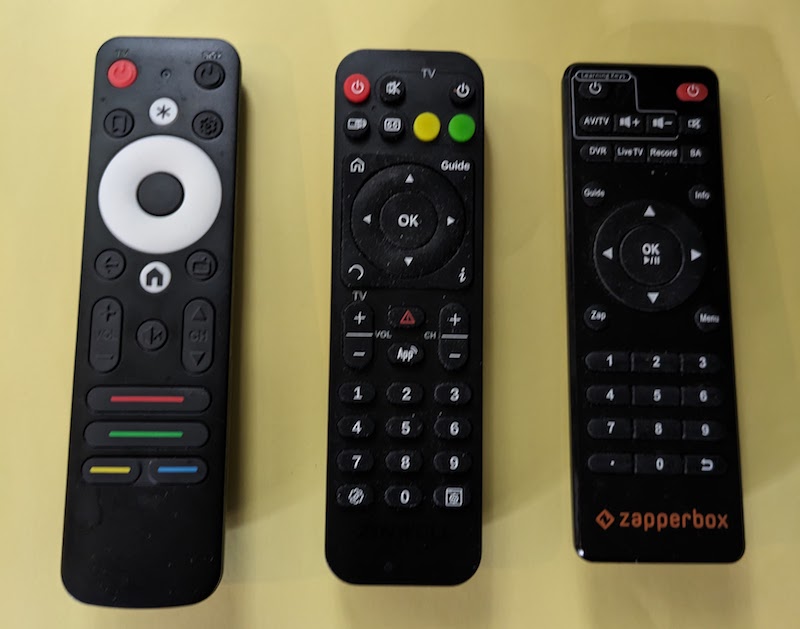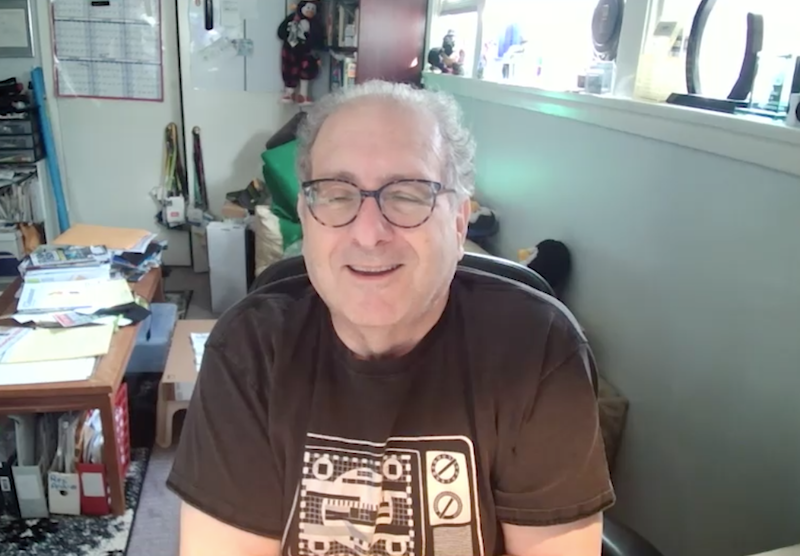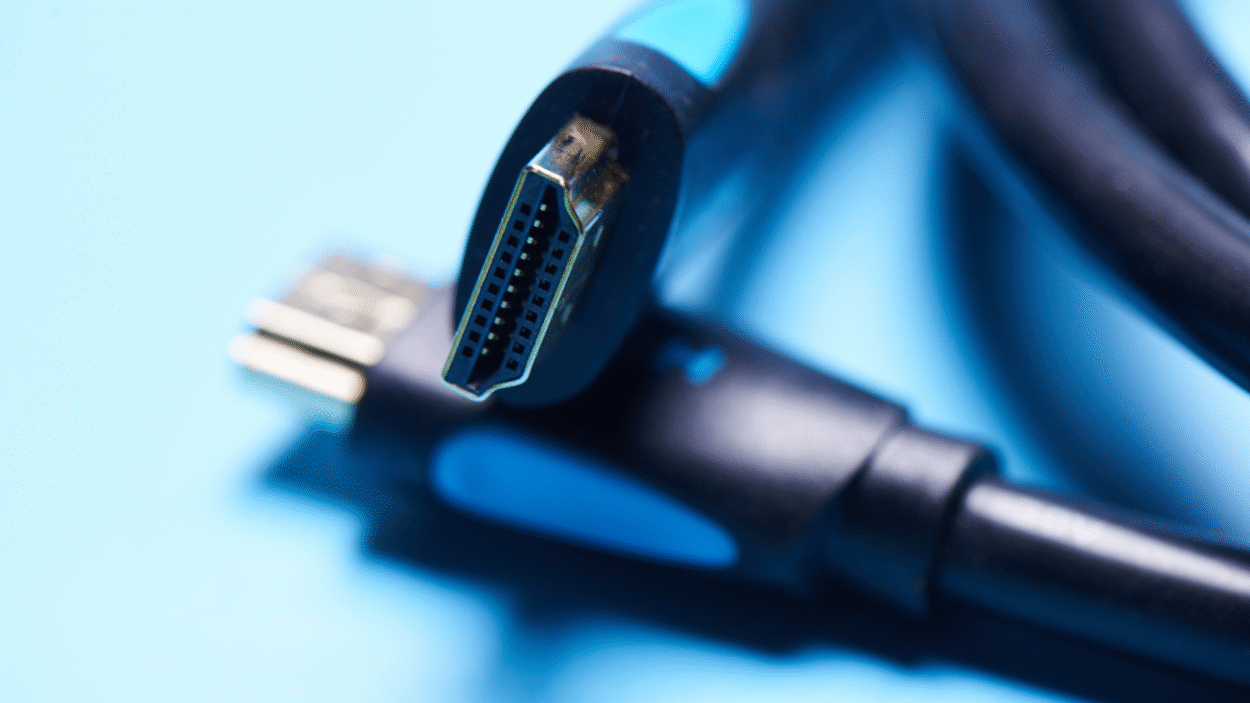In the early days of the InfoComm conference and trade show, the Projector Shoot Out was a valuable exercise for assessing new video technologies back when the differences between brands and models could be significant. While the need for such an event no longer exists, it seemed like a great time to do my own shoot out, but this time between set top boxes that are used to bring off-air, ATSC 3.0/NextGen TV into a home.
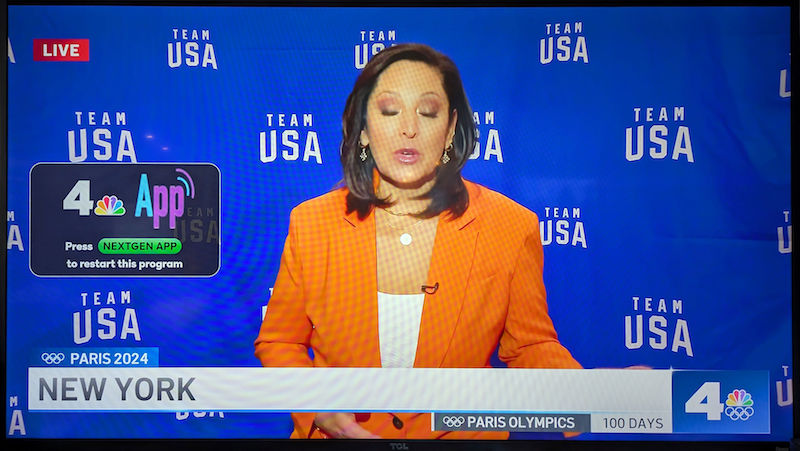
Now that some of the long-promised benefits of NextGen are starting to appear, you might want to get in the game. You can take advantage of features such as 1080p resolution, HDR, and now, finally, NextGen Apps that deliver features that rival or even exceed those of streaming along with hyper-localized content for news, sports, weather, emergency alerts, and a new feature, “play from beginning.” That’s right! Similar to streaming apps like Hulu Live or YouTube TV, if you land on an App-capable station while surfing, but land in the middle of a program, simply press the App button and navigate to “play from beginning,” and restart that program.
The Similarities
The competitors in our first NextGen TV Shoot Out span a price range from $89.95 to $224.95 for single-tuner models and $274.95 for a dual-tuner STB. In this type of review, one might tend to focus on differences, but it is also good to start with the basic items present in all of the products. For example, each is capable of tuning both standard ATSC 1.0 channels as well as new ATSC 3.0 signals. All are compatible with Dolby Audio and HDR. All come with remotes that have some level of programmability for TV set functions such as power on/off, volume, and mute. All are reasonably compact units and have both wired and dual-band wireless internet connectivity. All also have at least one USB-A port for current or future DVR recording time expansion.
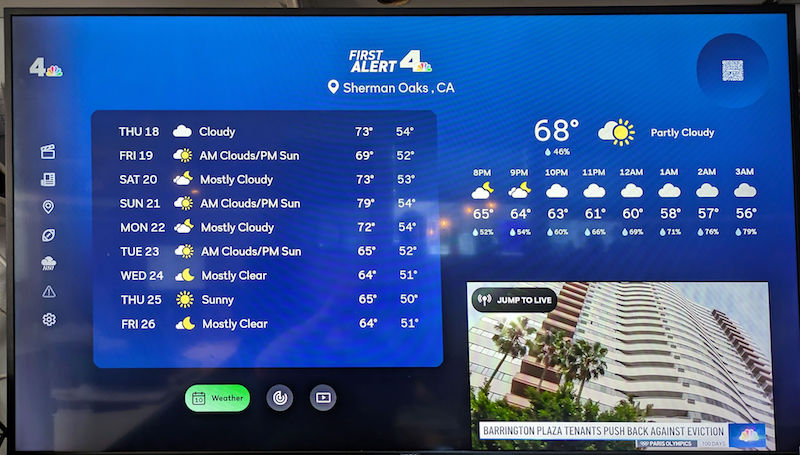
It is important to note that while all three are 4K capable, there are no stations actually broadcasting 4K content. However, here is where one of NextGen TV’s benefits comes into play: virtually all NextGen stations that broadcast 720p or 1080i on their regular channels, broadcast in 1080p on their NextGen channel. Combine that with an increasing amount of HDR content, such as this year’s Kentucky Derby and Indy 500, along with the Dolby Vision and Advanced HDR by Technicolor, and the video quality is often better than standard broadcasts even without 4K.
Early on there was some consumer concern about the digital rights management (DRM) system used by some stations and networks. All three boxes reviewed offer proper decoding, so there is no problem with this “behind the scenes” protection for content owners. Note, however, that the ADTH and Zapperbox products do require a persistent internet connection to view the protected content while the Zinwell is unique in that it does not. However, given the need for connectivity to get the frequent software updates/feature upgrades, bug fixes and in some cases that longer time program guide data I would not recommend using any of these products without connectivity.
One last important point of commonality: All three of these products require a direct HDMI connection to a display. Unlike previous ATSC 1.0 boxes, there is no whole-house, app-driven option that works with copy protected content. Fear not, however, as Zapperbox does plan to introduce products and software later this year that will enable you to share a single ATSC 3.0 tuner across the home network. Alternatively, for products such as monitors, projectors, or for viewing off-air content via an iOS or Android app, consider the new 4th Generation Tablo (see end of article).
The ADTH NextGen TV Box
Now that we’ve discussed the commonalities, it is time to contrast the differences between the three shoot out contenders. First is the ADTH NextGen TV Box, which carries an $89.95 retail price. It does the basics, including all of the features listed above, but it is the only product in the group with an optical digital audio output. It also has basic DVR capability that lets you record the program you are watching to an internal or external memory. That’s a start, but with only one tuner it is a bit limited since you can’t watch one program and record another or schedule an advance recording.
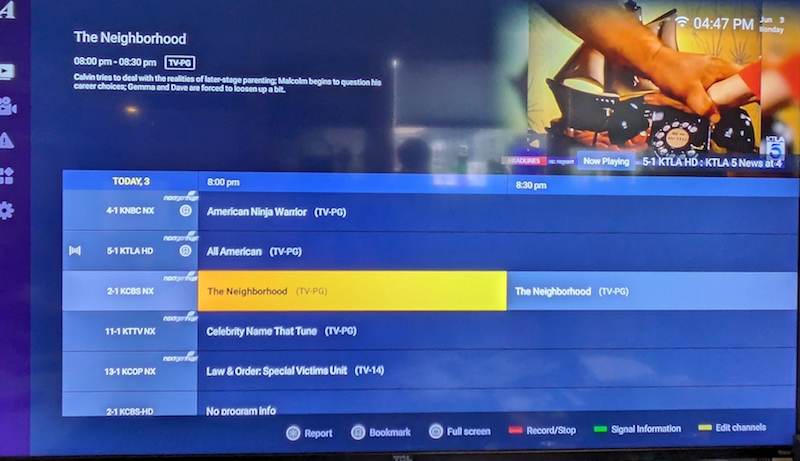
From a functionality standpoint the ADTH NextGen TV Box user interface is often a bit clumsy and confusing to use but it is manageable once you get familiar with it. Its unique features among our device trio include an optical audio output and the ability to pair a Bluetooth-powered remote.
Perhaps the biggest downside of the ADTH is the remote. Other than some color-coded buttons, a white navigation ring, “Home” and “Þ” buttons, and a red TV power button, all of the buttons are black and there is no screening on the remote to tell you at a glance what the button’s function is. That clearly is a problem in a dimly lit viewing situation. Also absent is a numeric keypad, something you would think would be standard in a device where you select channels by their number.
A spokesperson for Tolka Software, which powers the ADTH receiver, tells us that their DVR functionality is still in beta and will be updated and improved as time goes on along with an updated and improved interface. They also told us that new models will soon be shipping with a revised remote that will include a numeric keypad. That type of response speaks well for ADTH and the frequent update paths for all of these devices is definitely something that sets them apart from most other video display products.
In summary, while it falls a bit short on ease of use, the ADTH NextGen TV Box is an interesting point of entry for free, high-quality video and audio access to off-air TV with the added benefit of the NextGen App features. At $89.95 you can’t argue with the price and mine will most likely find its home connected to an HDMI input on one my desktop monitors.
The Zinwell ZAT-600B
Channel Master provided me with the Zinwell ZAT-600B, which is available from retail and online outlets for $149.00. At the midpoint of the price spread between our three STBs, it has its own unique take on how to present the NextGen TV service to consumers.
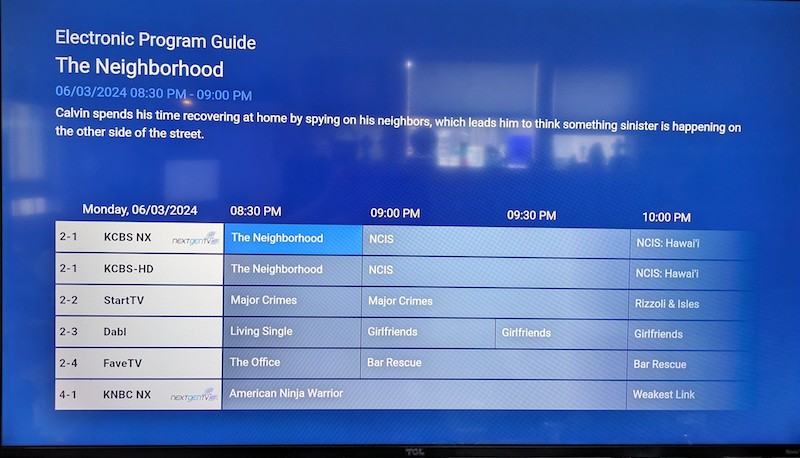
Upping the game, as befits a slightly higher price, the Zinwell has a very readable remote with a full numeric keypad. The presence of buttons for emergency alerts and the NextGen App features right in the center of the remote, combined with a smoother user interface, makes it much easier to use.
As is always the case, there is some give and take in a feature comparison. The Zinwell does not have either the DVR or optical output, but it is the only product of this type that enables you to view DRM-protected channels without an internet connection. While I would recommend internet connectivity so that you are able to receive software and feature updates, there are places where internet connectivity is sparce, if not totally unavailable. Remote vacation homes, tailgating, and RVs come to mind as obvious places where the ZAT-600B would be a perfect fit for downtime entertainment when all you need is a TV, an antenna, and a power source.
Attention to detail and the ability to respond to customer concerns is also a high point for the Zinwell ZAT-600B. I am not the only user to have complained about an overly bright front panel LED that more than lights up the room. Channel Master has heard the complaints, and a software fix is on the way.
With its ease of use and full feature set, the Zinwell ZAT-600B definitely sets a benchmark for a reasonably priced point of entry for an easy-to-use NextGen TV product that is particularly well suited for projectors and other displays that don’t have an off-air tuner of their own.
The ZapperBox M1
Completing the range is the ZapperBox M1, which retails for $224.95. There is also a two-tuner version at $274.95 provided for this review by Zapperbox. There is no hiding the fact that these prices are more than a bit higher than the ADTH and Zinwell, but it is also quite clear that this product has taken a much different approach to a NextGen product.
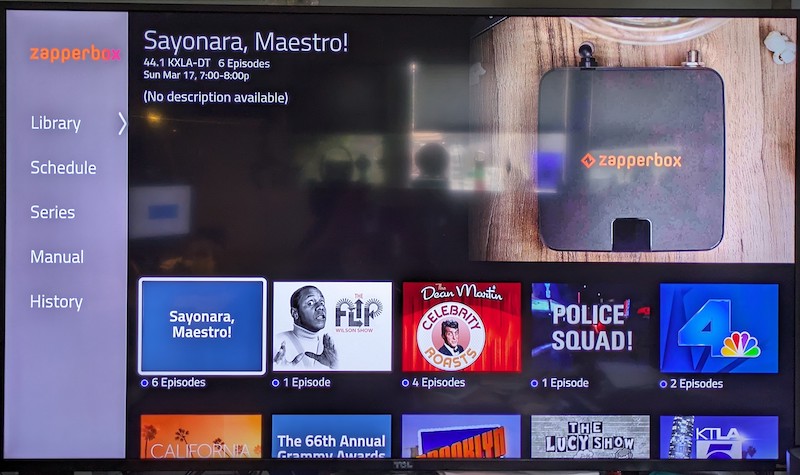
Two things stand out here. The first is a from-the-ground-up user interface that is among the best I’ve seen for this type of product. Any evidence of Android underpinnings is totally invisible. Unlike the other two STBs, Zapper designed its UI from scratch, and it shows. The graphics are sharp, and the information is clear and comprehensive.
The other main difference is the inclusion of local DVR capability. This means that, without additional fees, you can record the show you are watching or schedule a manual recording by entering the channel number, date, and time, as long as you you add at least 128GB of storage via a microSD card or a USB thumb drive or standard external drive. Up to 50 hours of HD or 4K video or 115 hours of 1080p video can be stored with a 256GB card, but you can double or quadruple that using 512Gb or 1TB cards. Using the USB 3.0 or USB 2.0 Type-A ports external drives, up to 4TB have been tested and approved.
ZapperBox M1’s DVR capability and local storage also allows you pause/play for up to five minutes using the internal storage of up to an hour on microSD cards or external storage along with rewind/fast forward control for the program being watched. For an additional charge of $29.95/year you get a full 14-day program guide and the ability to select and record future programs from the guide or a search menu as well as view cover art for recorded shows.
Access to YouTube is another interesting addition to what is mostly intended to be the ZapperBox’s off-air tuner/DVR. This means that with one product you can have your broadcast channels and YouTube streaming, as well.
For all the features that the Zapperbox has, it does not include NextGen Apps. A spokesperson for Zapperbox has told me that it is on their product roadmap for a later software update, but at this time they look to expanding DVR functionality and expanding their product ecosystem as a priority. Those updates have recently added more control over recordings such as not recording duplicates and recording new episodes only, recording only new episodes, and the ability to record encrypted broadband channels.
Indeed, starting with V3.0 updates this summer, Zapperboxes will become multi-room gateways so that two dual-tuner Zappers will act as a quad-tuner device. That roadmap also includes support for unencrypted programs over a home network to future non-tuner Zapperbox products and control via IP or use of an SDK for smart home integration and streaming apps for connected TVs.
Making the Case for NextGen Tuners
In a world of home budget concerns over the rising cost of streaming services and cable to deliver broadcast stations, with the addition of a decent indoor or, even better, outdoor antenna these boxes bring you the best quality video and audio available off-air, for FREE. It also bears repeating again that while their features, remotes, and user interfaces differ, all three of these products do a good job of all the needed basics. Even better, albeit each in their own direction, all three brands have made good on their promises to address bugs, provide updates, and add more features. For something that is still a relatively new technology for consumers, this is a comforting fact given the rough road that other new technologies have faced in their early stages.
Back in the days of the old InfoComm Projector ShootOut, it was natural to be asked, “So which one is best? Which one would you recommend?” A question sometimes easier asked than answered. In this case the answer may not be as clear as you would like. It may seem as though I am ducking the question, but my response is, “It depends.”
ADTH is the most affordable, but that comes at a price with a beta version DVR with an interface and remote that some might find difficult to use.
The Zinwell ZAT-600B is a very solid choice at a reasonable price with a better remote and interface, along with the Apps features and the ability to use it in a location where there is no consistent internet connection.
The Zapperbox M-1 is the way to go if you are willing to pay a higher price and forgo, at least for now, NextGen Apps. The user interface is among the best around for this type of product and play/pause and rewind/fast forward along full DVR capability for all off-air channels while also having YouTube make it unique. Particularly for residential technology professionals, the impressive feature roadmap plan may compensate for the current lack of the App features in the long run.
We’ve been waiting for NextGen TV to arrive for quite some time but initially that required a new TV from Samsung, Hisense, Sony, or TCL. More NextGen-capable TVs are likely to hit the market as time moves forward, and perhaps even the return of LG who has currently stopped making NextGen sets. However, the availability of these three external products makes it easier and more affordable to put a toe in the NextGen waters. After living with all three for a few months, I can attest to the fact that having them is so easy that I am moving ever so slightly toward cutting more of the cords.
Tablo: An Off-Air Tuning and DVR Alternative
Along with the NextGen TV set top boxes, it is worth noting that there is another very reasonably priced option for off-air tuning and DVR. Tablo, a long-time fixture in the market, updated their product line last year with the introduction of the totally redesigned 4th Generation Tablo product. Eschewing the black, squarish look of their previous models, this white, circular design is different in many ways and is worth a look as another option to view and record free, ATSC 1.0 broadcast channels without any subscription costs.

Available in two- and four-tuner units, at $99.99 and $139.99 respectively, the new models keep to Tablo’s original model in that they have no remote but rather simply connect to your antenna and home broadband network with viewing and control being done through Roku, Fire TV, Android, iOS or Samsung smart TV apps, with apps for Apple TV and LG webOS in the works. Key improvements from earlier models are that there the 14-day program guide is now free, with no annual charge. In addition, there is now 128GB of onboard storage that will let you record over 50 hours of content. You may also add your own external storage up to 8TB.
Along with the physical design the user interface has been updated for ease of use and to add additional program information. Another major addition is access to over 70 free, ad-supported (FAST) streaming channels that you may also record.
Since, unlike the current NextGen TV boxes, Tablo does not require direct connection to a TV via HDMI you may place closest to an off-air antenna connection, either indoors or out, without regard to where the TV sets are. The ability to do that and then watch live or recorded content on any set in the home with no charge for storage or program guide info may be an interesting option for those who will forgo the benefits of NextGen TV for now while still having access to broadcast TV at a very affordable price.



